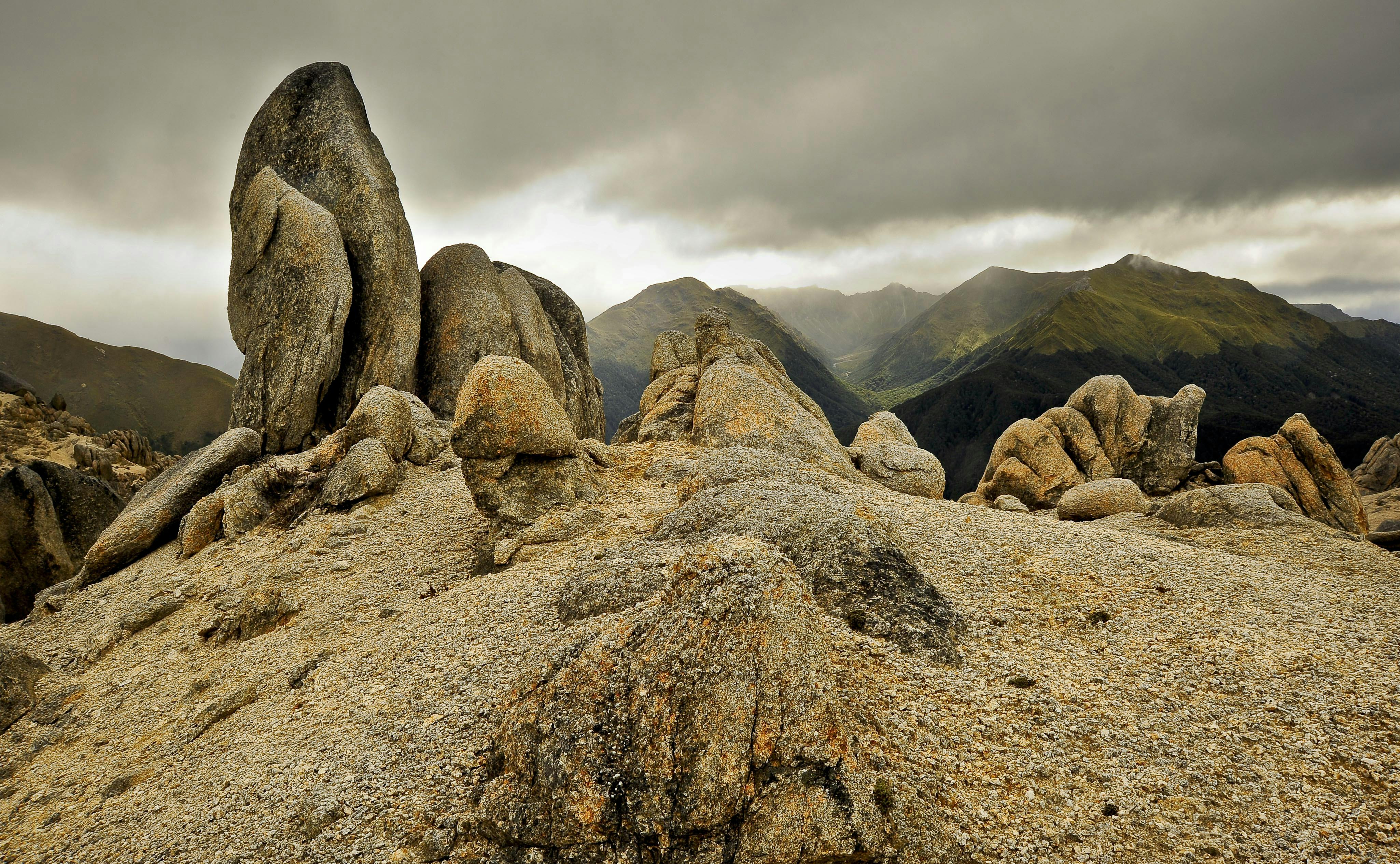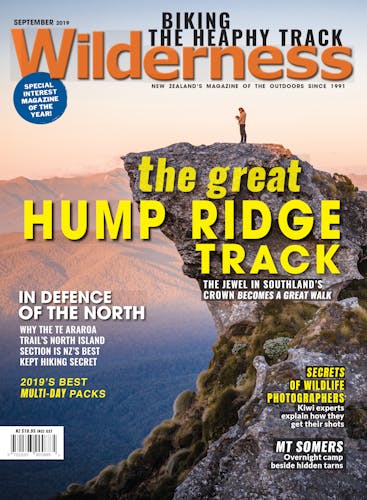Who says rocks aren’t beautiful? Shaun Barnett finds five places where the granite will leave you marvelling
Granite forms a distinctive feature in the landforms of several of our national and forest parks. It’s a plutonic rock, classed in the igneous group: rock that has cooled from a molten state very slowly, forming sizeable crystals. Granite is usually pinkish to white in colour, although occasionally brown, and the glint you sometimes see in it are flecks of mica or hornblende.
Although anything other than the most rudimentary understanding of geology has eluded me, as a tramper I appreciate the simple beauty and diversity of rocks encountered in the backcountry. Here are five tramping destinations to marvel at granite.
1 Anapai Bay, Abel Tasman National Park
The Abel Tasman Coast Track is famous for its coarse, golden sands and granite headlands. Perhaps the most exquisite granite formations are the pillars of Anapai Bay, the cove north of Totaranui. It’s on a section of the Coast Track that gets slightly less traffic, and it also offers a pleasant campsite.
2 Lead Hills, Kahurangi National Park
Looking like the discarded dice of some leviathan, the granite jumbles of the Lead Hills are really quite something. The Lead Hills lie west of the Douglas Range and provide an interesting diversion from the Dragon’s Teeth route – perhaps as a day trip from Boulder Lake Hut.
3 Mt Haast, Victoria Forest Park
From some angles, Mt Haast (1587m) has a curiously volcano-like appearance, but that’s just a quirk of topography. The mountains of Victoria Forest Park, our largest forest park (206,000ha), consist mostly of dark grey granite. The park has few trails or huts, but the excellent track to the summit of Mt Haast crosses some large boulder fields, where alpine plants abound.
4 Mt Titiroa, Fiordland National Park
From a distance, the granite of Mt Titiroa (1705m) gleams deceptively, looking like it’s just received fresh snowfall, even when there has been no snow. It’s a summit of extraordinary rock forms, great granite eggs, delicate balancing stacks, huge rock jumbles and coarse-grained sands. Two overnight routes to the summit exist; one from the south via the North Borland Valley, and the other from Manapouri township via tracks to Hope Arm and the Garnock Burn.
5 Rakiura National Park, Stewart Island
Perhaps the strangest granite formations in New Zealand are the domes of Port Pegasus, in Rakiura’s remote southern reaches. Gog and Magog are just two of several granite mountains in the region. More accessible is Mt Anglem, the island’s highest peak, which is also composed of granite.








